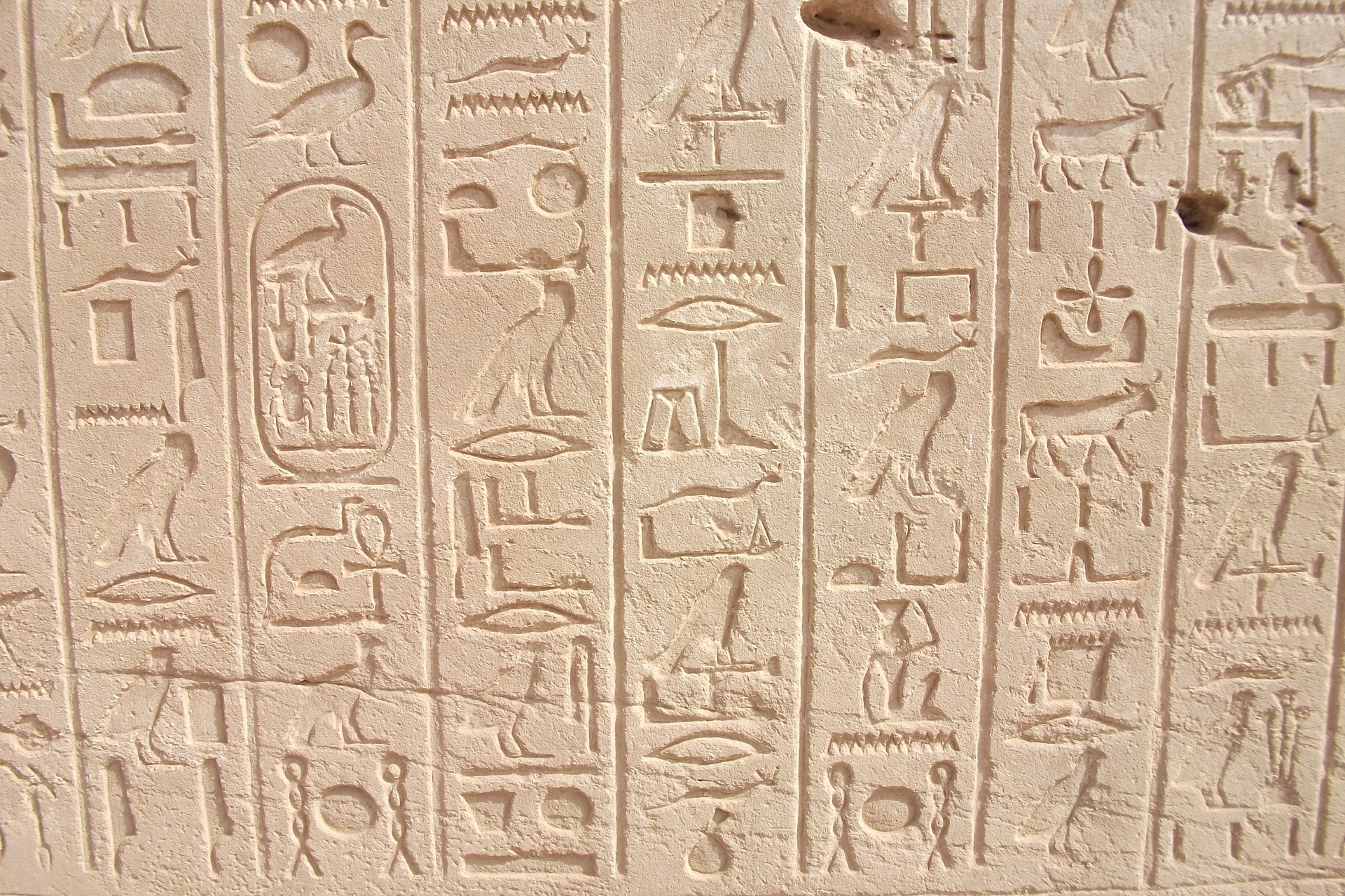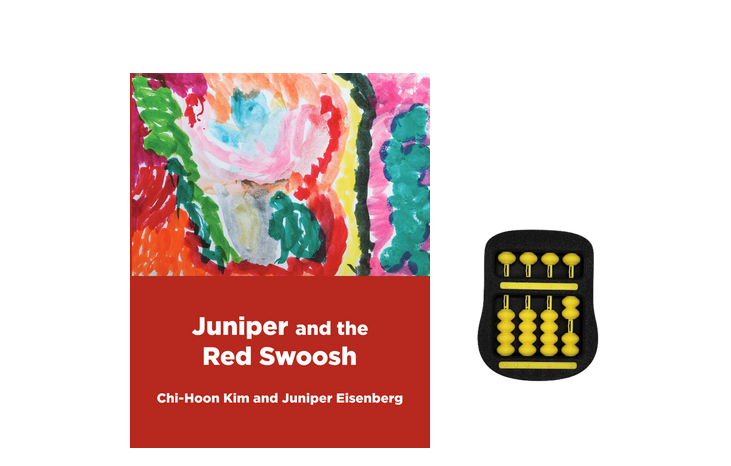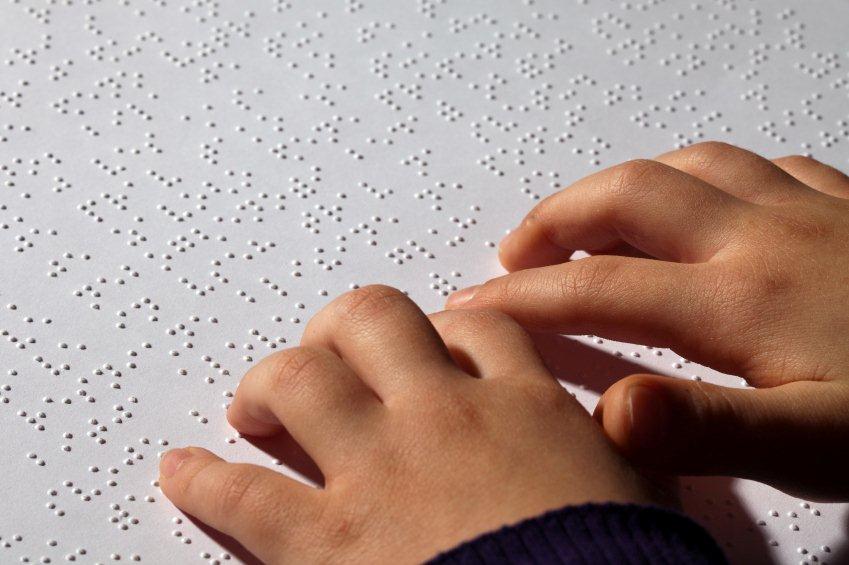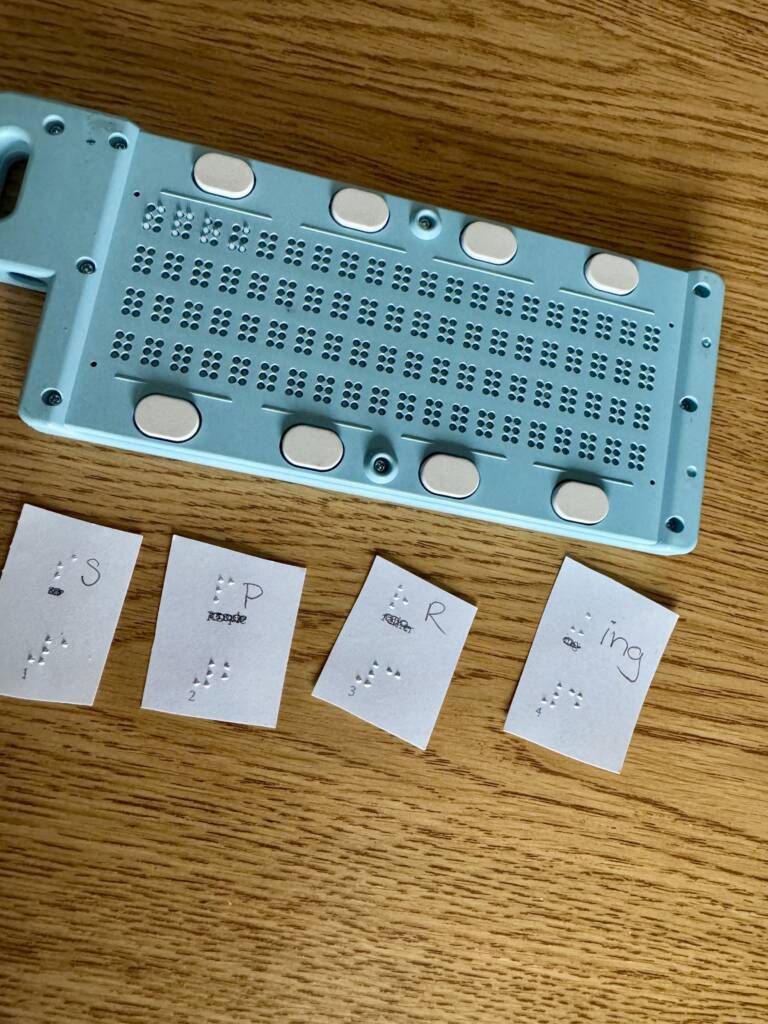My oldest son is 8 years old and in the 3rd grade, which is the same age as my student D. They are great friends, sharing common interests like a love of Minecraft and telling and hearing silly jokes. Another one of my son’s favorite things is words games and brainteasers. He often asks me to make up “secret messages” for him. These are simply replacing the letters of the alphabet with a symbol that represents a letter which he has to figure out (also known as a “cryptogram”).
Here is an example of one I found online at The Classroom Game Nook.
Knowing that D. and my son have such similar interests, I knew she would LOVE this activity! Instead of calling it “crack the code”, I decided to call it “braille hieroglyphics,” which sounds a lot cooler.
I used APH’s feel and peel stickers to substitute for the letters of the alphabet. Below you can see D. exploring the “hieroglyphic” symbols.
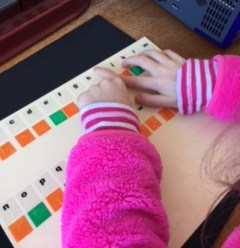
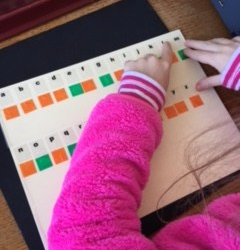
It took some getting used to. I had created 2 templates for her to explore and decide which one she thought she could work best with. I used this time to talk to her about how important it is for her to verbalize to her wonderful transcriptionist the layout that works best for her. I wanted to give her options so that she could understand that although the information delivered is the same, if she has a preference she can let us know and we can accommodate that. Self-advocacy is not a new concept for her, but knowing that she can have input in how her work is delivered to her is something that she is beginning to work on.
Here you can see the alternate format I presented is vertical rather than horizontal:
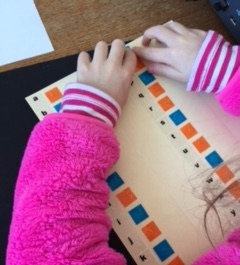
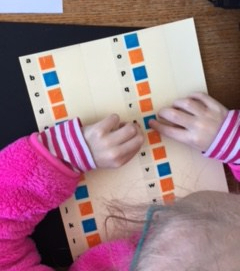
Ultimately, D. chose the horizontal layout.
Originally, I had intended for D. to decode and braille the message as she went. I quickly realized that there were WAY TOO MANY moving parts and she was getting frustrated. This was not the intent of the time we had together. I asked her if she had another suggestion on how we could get it done, and she asked me if she told me the letters if I could braille them out for her. I agreed.
In hindsight, I had used a work tray over her brailler. D. has a plexi glass shelf that goes over the top of her brailler, so that she can be reading a brailled sheet on top of the tray, but still have access to braille on her brailler in the same space.
Below, you can see D. working hard to decode her “hieroglyphic message”.
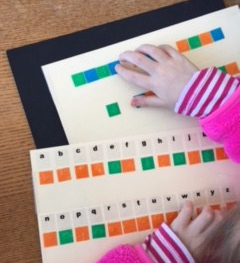
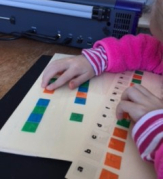
This is what she asked me to braille for her, as she decoded the message: “hope you have a great day”

It might be hard to see, but I covered the page with the code on it in clear packing tape, so that the stickers could be removed and reused. I also put the clear packing tape on the alphabet/symbol page so that the symbols could be switched around every time you do the activity. If your student is anything like D., then after the second coded message she/he will have memorized the symbols that are associated with each symbol and switching will be a necessity to keep the student interested.

